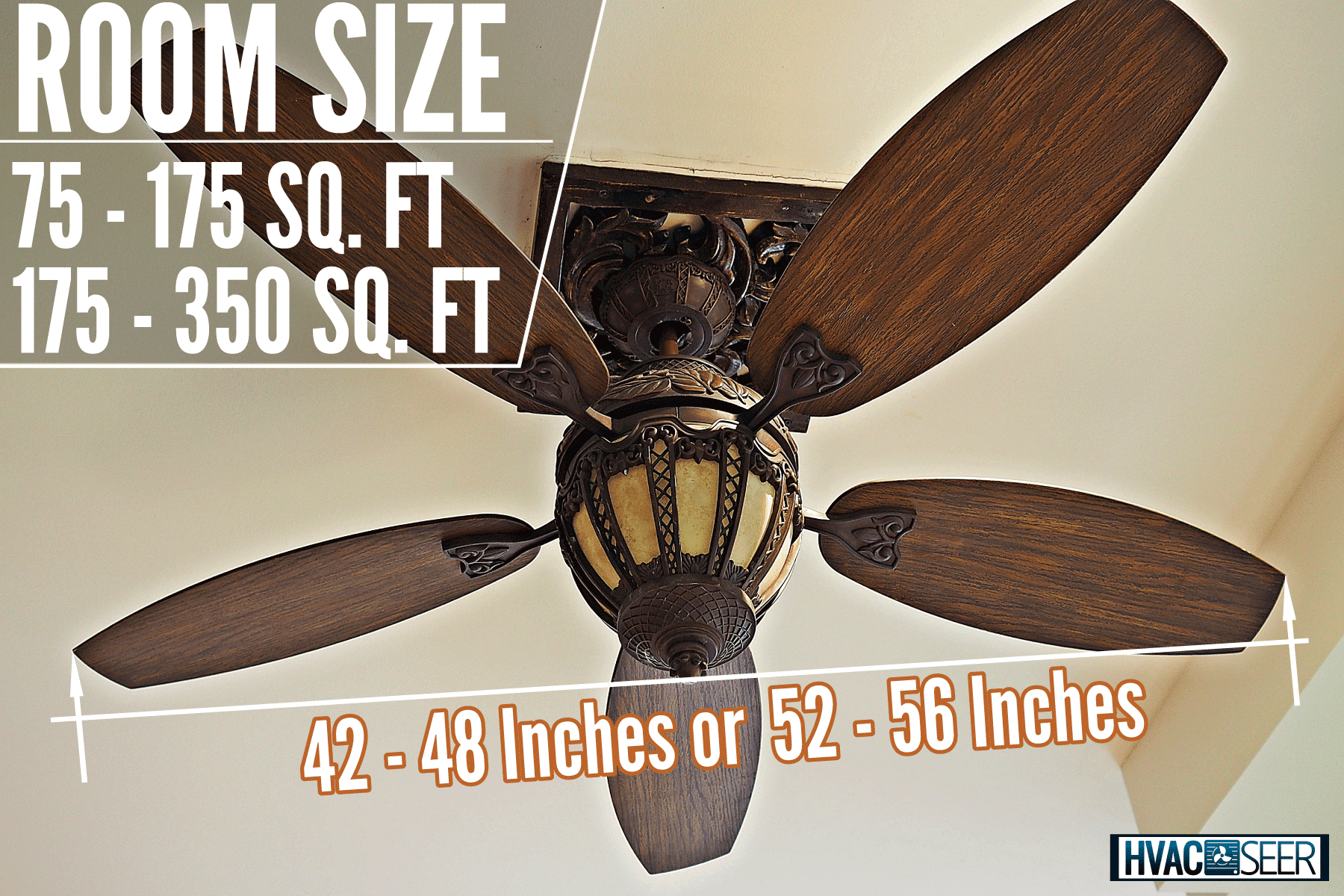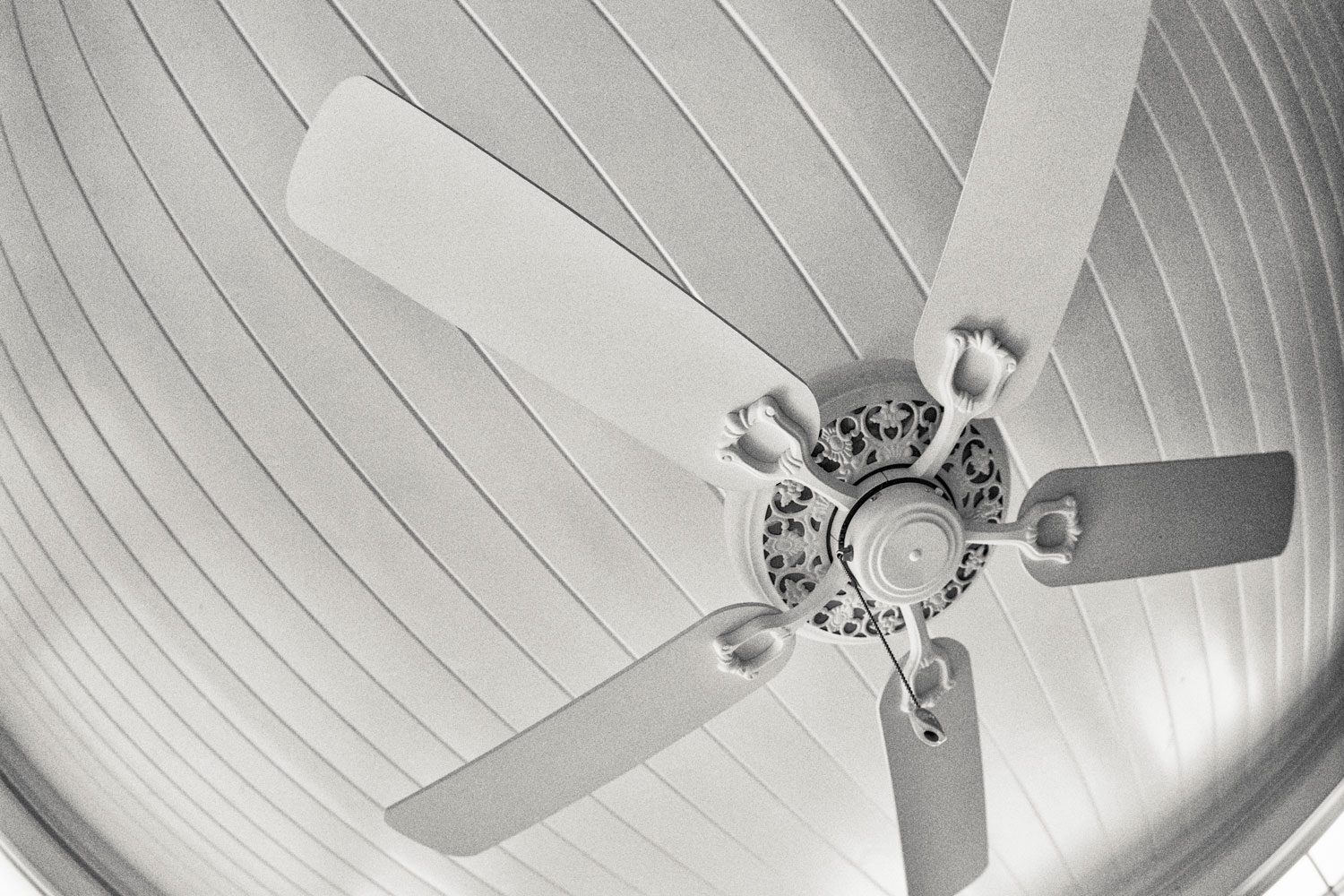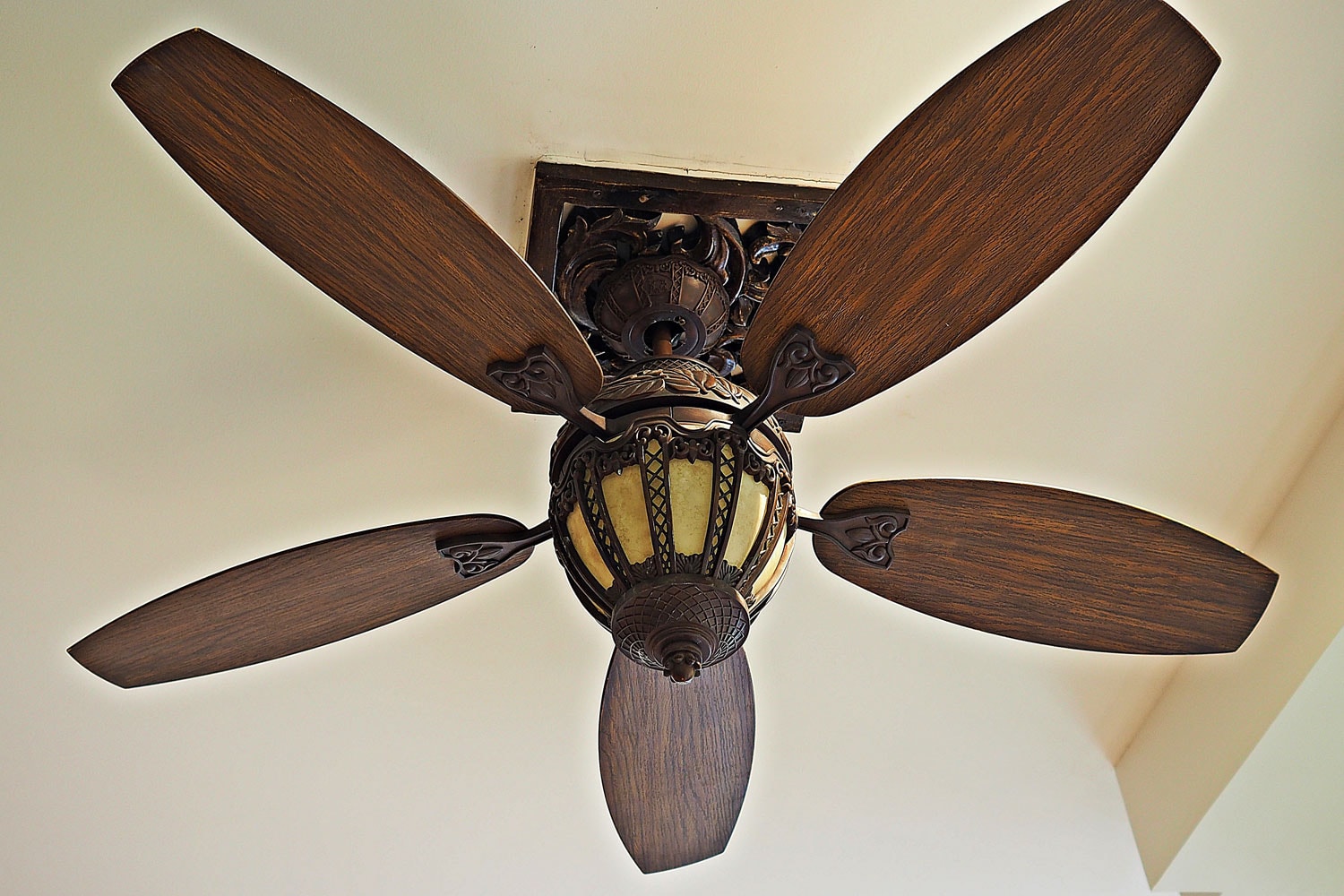Choosing the right ceiling fan size is important to provide good ventilation to the room and the people who will cool themselves under it. We researched this topic and gathered information from experts so you can be best informed to get the perfect fan for your bedroom.
According to the appropriate span, 42- to 48-inch fans are for a standard bedroom that ranges from 75 to 175 square feet. For areas up to 175 to 350 square feet, a 52- to 56-inch fan is the right size for you.
This is not the only thing you should consider. You should also think about other aspects of the fan in making your selection. Keep on reading to know more about this.

How To Know The Right Ceiling Fan Size
The first thing you should do is determine your bedroom's square footage. Knowing how big it is, you can estimate the measurement of any furniture or fixtures you will buy. Measure it by multiplying the total length by its width.
Look at the example below for better understanding:
- Length in feet x Width in feet = Total floor area in square feet
For example, the total length of your room is 10 feet long and 10 feet wide. So, 10 feet x 10 feet = 100 square feet
After that, check out the quick guide to sizing ceiling fans based on the image below:
When dealing with larger and longer dimensions, Add two or more smaller separate fans. Make sure to have at least 8 inches of clearance between the blades to prevent them from bumping with each other.
Be keen about this because it will help your appliance a lot. Installing a big ceiling fan in a small room may blow the air too powerfully while having a small fan in a big room will lead to the motor potentially overheating from overworking to keep the space cool.
How High Should You Hang Your Fan?
Ceiling fans should at least be 8 feet above the floor, and the blades should have a minimum of 18 inches of distance from the wall. If the ceiling height is less than 8 feet, choose a low-profile ceiling fan.
Nowadays, it comes in different styles that will suit a homeowner's taste, like the photo below.
But if it is more than 9 feet long, opt for the one with a downrod.
It can lower your fan to give the best cooling effect and helps stabilize it to prevent it from wobbling when turned on. This comes in different lengths depending on the height of your ceiling.
What Downrod Size Do You Need?
To make sure you got the correct measurement, calculate the length of downrod you need by referring to the following formula:
Ceiling Height - 8 feet (standard distance above the floor) = Downward Length
Let's say you have an 11 feet ceiling; using the equation above: 11 feet ceiling - 8 feet = 3 feet (36 inches)
Now, you can calculate your needed downrod length on your own. Do not worry if you have a sloped or angled ceiling. There are available bases for that to keep it straight, like what you can see in the photo.
How Many Blades On A Ceiling Fan Is Best?

The best ceiling fan blade will depend on your needs. Whether you are after the aesthetic, the money you'll save, or the level of performance. Ceiling fans can have up to eight blades, but the most common among the buyers on the market are the 3-, 4-, and 5-bladed ceiling fans.
3-Blade
This type is the most money saver among the rest. Three blades are lightweight, so they require less energy. Meaning, you pay less for the electrical bill. The downfall is producing more sound because it uses an uneven number of wings to balance.
They are often used in industrial places like the office and public spots where noise is not an issue and is the last thing they will care about.
4-Blade
The opposite of a 3-blade, the 4-bladed ceiling fan is quieter due to the added weight. But since it's heavier, it consumes more electricity to be able to rotate them. It also costs more, but this is the ideal indoor ceiling fan.
Perfect for bedrooms where you need a quiet night since additional blades produce gentler wind.
5-Blade
The only reason a homeowner would purchase this is for personal taste. As discussed above, the heavier the blades, the heavier they will become, which means: more energy consumption and price and less noise.
Learn more about ceiling fan airflow here: "What Is A Good Airflow For A Ceiling Fan?"
What Is The Most Efficient Fan Shape?

According to research, curved and straight fans differ in produced noise and performance. A straight fan blade moves more air while curved blades create less noise.
- Performance: Straight fan blades stall at a higher pressure, enabling them to circulate a stronger breeze than curved ones. If you opt for maximum performance to fight the heat, straight blades are for you.
- Noise: Curved blades blow weaker, which makes it not that noisy. Noise-sensitive people can make this a good choice if they are after the silence.
Using curved fan blades, but it is still turbulent? Read the probable reason here: "Ceiling Fan Making Grinding Noise; What Could Be Wrong?"
Can You Put A Ceiling Fan Where A Light Was?
Yes, you can install a ceiling fan where your light bulbs were and do not have to worry about the electrical wiring. But, what your concern should be is if it can support your ceiling fan's weight.
Before installing the fan, situate a ceiling fan rated electrical box. It is created to house electrical wire connections and support your fan's extra weight. If you need to install one, we highly recommend getting it done by a licensed, professional electrician.
How Much Does It Cost To Have Someone Install A Ceiling fan?
On average, the labor price costs $50 - $200. Depending on the rate per hour of the electrician you hired and also depends on so many things like are there existing wiring or not? How many fans are they going to install? Does it come with a light?
Simple pulling and replacing a fan is cheaper and can be done by a handyman. Discuss pricing with your electrician for more accurate details.
How Long Does Ceiling Fan Installation Take?
Depending on the complexity of installation, it usually takes between one to three hours.
- Basic: Installation with existing wiring and switches can take up to 1 to 2 hours.
- Complex: These installations require new lines of electric wiring, switches, and boxes. Also, these typically need additional materials plus drilling holes into the wall and ceiling. It generally takes two hours or more to be complete.
- Simple Replacement: If done by a professional, it will only take less than an hour.
Can I Install Ceiling Fan Myself?
If you have the necessary skills needed, like drilling, removing, and attaching electrical boxes, assembling ceiling plates and fan parts, and connecting wires, you can do it yourself. Just make sure to strictly follow the safety precautions and right procedure.
However, if you have the slightest doubt, especially in dealing with electricity, it is best to leave the job to electricians.
Is It Good To Have Ceiling Fan With Light?

Ceiling fans with light are often placed in small areas like the bedroom since they can distribute enough light in the space. Nevertheless, it all comes down to individual preferences. If you want to put a spotlight on certain areas or remove the focal point in your ceiling fan.
Check out this related article: "What Ceiling Fans Have The Brightest Light?"
In larger rooms where it requires more lighting, you can opt for those with ceiling fans with no lights, especially if it is not in the center. Although, you can still put the one with a light bulb since it can help by contributing heat during the winter season.
Ceiling Fan Or Air conditioner?
Depending on the breeze you want, here are the pros and cons of the two methods of air cooling:
Ceiling fan
Pros:
- Consumes less energy (0.0311kWh per hour on average)
- Constantly cycles fresh air in your room
- More eco-friendly
- More efficient in open large spaces
- Comes in a variety of styles
- Minimal maintenance needed
Cons:
- Not helpful during extreme heat
Air Conditioner
Pros:
- Most helpful in cooling enclosed spaces during extreme heat
- Temperature can be adjusted accurately
Cons:
- Uses more energy to run (on average, 3000kWh per hour on warm days)
- Regular maintenance required
- Harmful to the environment
On the other hand, these two can work alongside. Once the air conditioner has cooled the room, you can turn it off and let the fan circulate the air for a longer-lasting effect.
To Wrap It Up

Now that you know all the vital information for finding the right ceiling fan size for your bedroom, finalize the process that you will do and choose the right style that will match the decor of your room.
